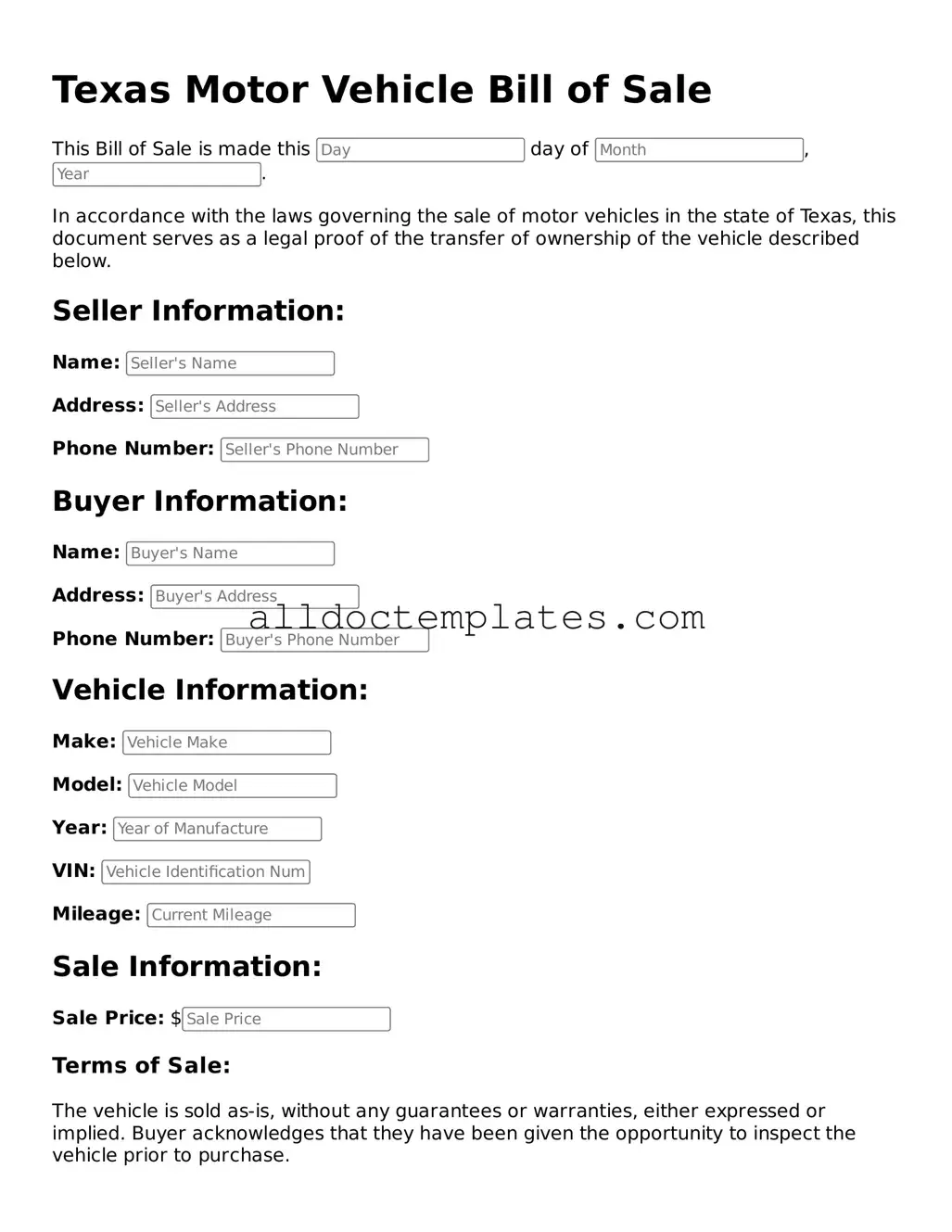Free Motor Vehicle Bill of Sale Document for Texas State
The Texas Motor Vehicle Bill of Sale is a legal document that serves as proof of the sale and transfer of ownership of a motor vehicle in the state of Texas. This form is essential for both buyers and sellers, ensuring that the transaction is documented and recognized by the state. Understanding its components and requirements can help facilitate a smooth vehicle transfer process.
Get Your Form Now
